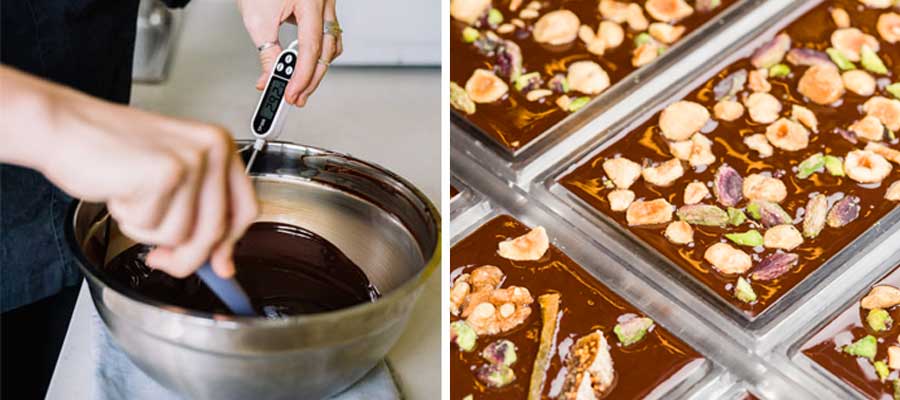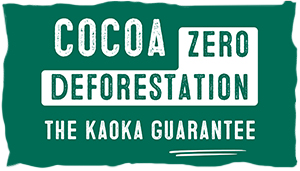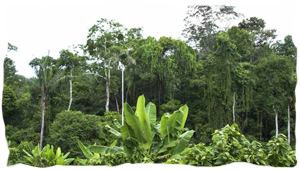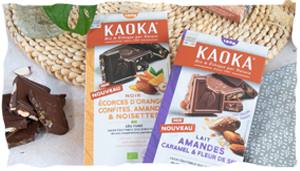How to make milk chocolate from dark chocolate ?
You only have dark chocolate at home and you’re craving for milk chocolate? Or are you simply curious about making your own milk chocolate? You can make it yourself, in just a few steps if you have dark chocolate at home.
You may be wondering what the advantage is of making your own milk chocolate? You can adapt the recipe to your own taste and control the exact percentage of cocoa, sugar and milk. Homemade milk chocolate can be enjoyed on its own or added to a recipe to replace a pastry chocolate.
- How chocolate is made
- What is milk chocolate made from?
- Why is powdered milk used to make milk chocolate?
- Recipe for milk chocolate made from dark chocolate
- Alternative recipe for milk chocolate made from cocoa powder
- Vegan milk chocolate recipe
- How do you store home-made milk chocolate?
How chocolate is made
There are several types of chocolate: dark chocolate, milk chocolate and white chocolate. The three main types of chocolate are made from cocoa paste, cocoa butter and sugar. Some industrial recipes include cocoa powder and an emulsifier (lecithin).
Cocoa paste is obtained by grinding the roasted cocoa beans. It contains all the intensity and aromas that will be found in the chocolate. It is the key to the quality of the chocolate.
Cocoa butter and cocoa powder are obtained by cold-pressing the cocoa paste. The extracted dry matter is ground and becomes cocoa powder, while the extracted fat is cocoa butter (deodorised).

Curious to find out more about the steps in making chocolate? We recommend the article How chocolate is made.
What is milk chocolate made from?
Milk chocolate was created in 1875 by the Swiss industrialist Daniel Peter.
It is made up of the following ingredients:
- Sugar,
- Cocoa butter,
- Milk powder,
- Cocoa mass,
- Emulsifier such as sunflower or soya lecithin (optional),
- Vanilla (optional).

Kaoka has chosen to stop using soya lecithin in the manufacture of its chocolates. And as far as possible, not to use lecithin or vanilla. Our goal is to offer chocolates that are ever more natural, so that you can fully savour the original flavours of aromatic cocoa.
As Kaoka identified a GMO risk with soya lecithin, we preferred to use sunflower lecithin in the rare cases where it was not possible to do without an emulsifier in the composition of the chocolate. (Simply Milk chocolate bar).
The percentage of cocoa can be much higher, up to 50% for milk chocolates, which contain the least sugar.
According to European regulations, milk chocolate must contain at least 25% cocoa (in the form of cocoa mass and cocoa butter).
Discover Kaoka Milk Chocolates.
Why is powdered milk used to make milk chocolate?
You may be wondering why milk is used in powder form to make milk chocolate? That’s an excellent question!
First of all, you need to know that milk powder is simply liquid milk that has been mechanically dehydrated to retain only the dry matter. And to understand why milk is included in the recipe in its dehydrated form, we need to look at the composition of the chocolate. As we saw earlier, it contains cocoa butter, which is a fat (lipid). But cocoa butter is hydrophobic. If the milk were added in its liquid form, it would be difficult to incorporate it into the cocoa butter and obtain a smooth, homogenous mixture when preparing the chocolate.
But if you add it to the recipe along with the other solid ingredients, such as cocoa mass and sugar, it is incorporated homogenously. In the industry, this mixture of cocoa mass, sugar and milk powder is mixed for long hours in a conche (the name of the large vat). This stage is essential to obtain a chocolate with a smooth texture.
Recipe for milk chocolate made from dark chocolate

If you have the necessary ingredients, you can make your own milk chocolate.
Ingredients for 200g of milk chocolate :
- 24g cocoa paste (100% Chocolate Bar)
- 52g cocoa butter
- 74g sugar
- 50g of dairy or plant-based powder milk
Instructions:
1/ Melt the cocoa butter using the method of your choice (bain-marie / water bath or microwave). Then gradually add the cocoa paste. Mix well until the cocoa butter and cocoa paste have melted perfectly and the mixture is smooth.
2/ Add the caster sugar in stages, then the caster milk and mix well.
3/ Pour your chocolate into the moulds of your choice or onto a baking tray lined with baking paper, and leave your milk chocolate to cool completely before tasting!
The most important part of this milk chocolate recipe is melting the chocolate. You mustn’t rush it, or you risk burning the cocoa paste. See all our tips for melting chocolate.
If you want to make a variation on your milk chocolate, you can spice up your bar by adding your favourite ingredients: dried fruit (hazelnuts, almonds), caramel, dried fruit (raspberries, bananas, raisins) or coconut.
Alternative recipe for milk chocolate made from cocoa powder
If you don’t have dark chocolate, you can also make milk chocolate from cocoa powder. Cocoa powder is sometimes used in the manufacture of some commercial chocolates. Cheaper than cocoa mass, it reduces manufacturing costs. At Kaoka, we don’t use cocoa powder to make our chocolates, which is why we prefer the recipe for milk chocolate made from dark chocolate above.
Ingredients for 170g of milk chocolate :
- 75g cocoa butter
- 40g sugar
- 30g low fat cocoa powder
- 25g dairy or plant-based powder milk
Instructions:
1/ Melt the cocoa butter using the method of your choice (bain-marie / water bath or microwave), add the sugar and mix well until the mixture is smooth.
2/ Add the cocoa powder in stages, then the milk powder and mix well.
3/ Pour your chocolate into the moulds of your choice and leave to cool completely before tasting!
Vegan milk chocolate recipe
If you want to make your own vegan milk chocolate, simply adapt the recipe by replacing the dairy milk powder with plant-based milk powder. Almond milk powder, hazelnut milk powder, coconut milk powder – you’re spoilt for choice when it comes to making your own vegan milk chocolate.
How do you store home-made milk chocolate?
Chocolate is a very sensitive product, and the one you’ve made with your own hands is even more so. To preserve it properly and prevent it from turning white, we recommend that you place it in a well-sealed recipient. Ideally, your tin or jar should be kept away from light and dry, in a cool place between 15°C and 18°C. The recipient will provide double protection for your chocolates, from surrounding odours (because chocolate has the ability to absorb them) and from light and ambient humidity!
We recommend that you use this chocolate (to make a recipe or for tasting) no later than 7 days after production.
En savoir plus sur .
Find out more about good chocolate conservation practices.
Are you used to making your own milk chocolate at home? Or would you like to give it a try, but still have one last question?
Please do not hesitate to contact us using this form. We’ll get back to you as soon as possible.




